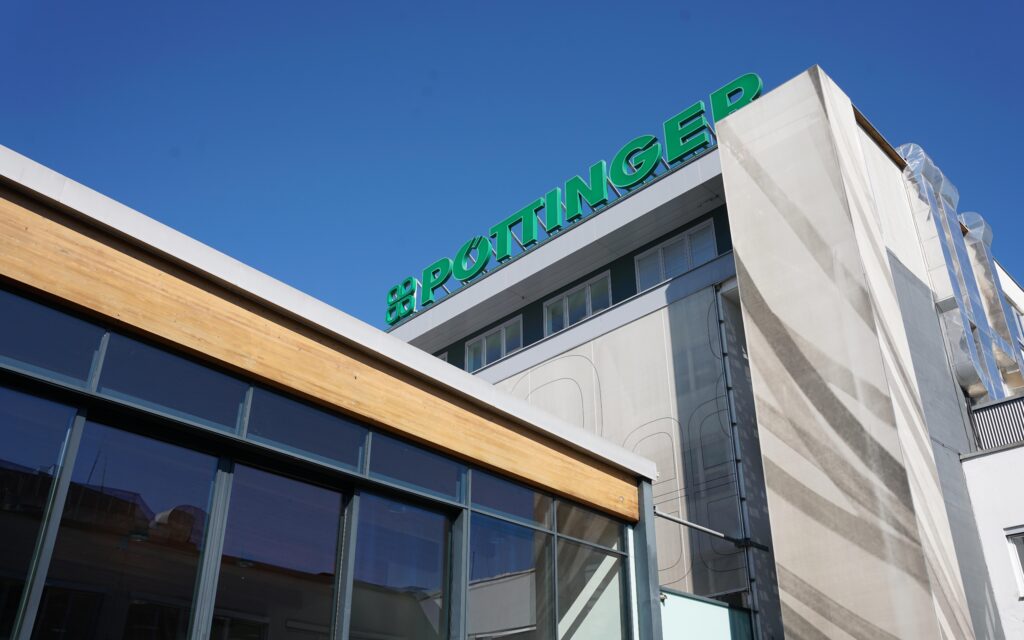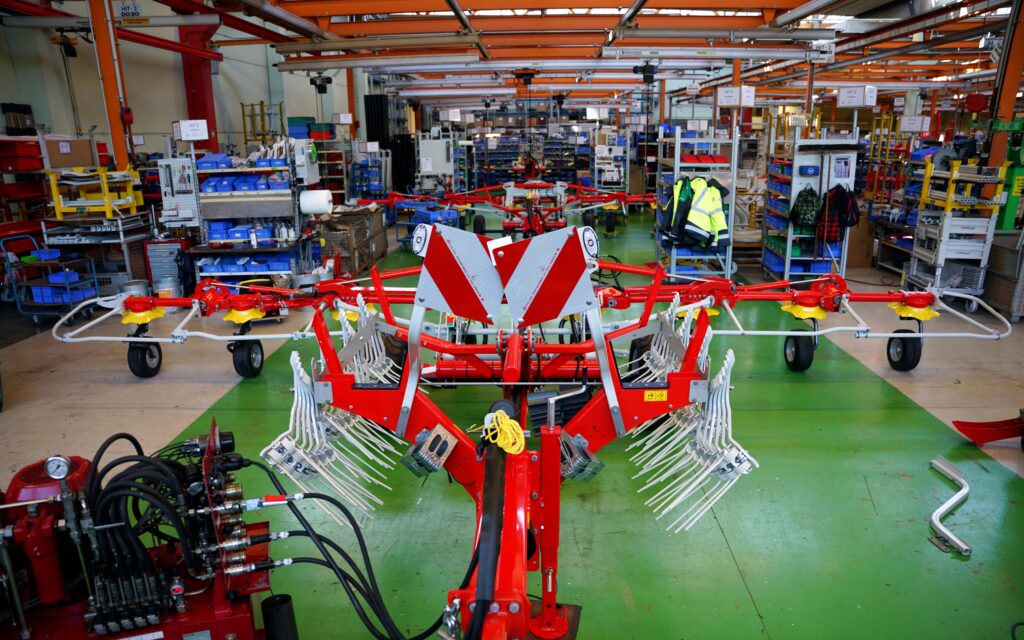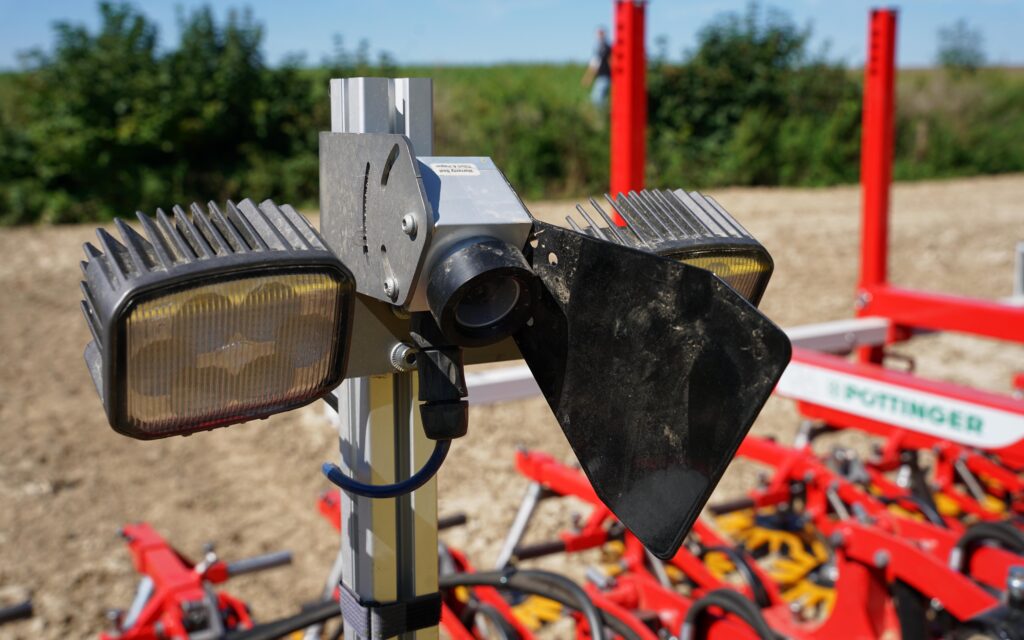Family owned companies, such as Pottinger of Grieskirchen, are quite distinct from corporations in that they are able to be a little more forthright and honest in their views without the constant fear of upsetting shareholders.
This was evident in the address given by Gregor Dietachmayr to journalists at the company headquarters in Grieskirchen, Austria, recently.
Tougher times forecast
Gregor sits on the company’s executive board of directors and is responsible for marketing. He is therefore well placed to know of how the machinery trade is faring and his prognosis, for the medium term at least, was not the most optimistic he has ever delivered.

In the company’s last accounting year, which runs from August to July, he noted that Pottinger met its forecast income of €641 million, a hard-won achievement given a slowing of sales in 2023.
This downturn was not unexpected as it followed two good years where demand outstripped supply. Yet that position is now reversed as Pottinger finds itself with expanded and now quite adequate production capacity and its dealers with growing inventories, stifling further orders.
Pay rise increases costs
One point that Gregor did stress was that there will be no reduction in machinery prices despite the fall in the cost of steel.

This is due to labour cost inflation with those working in the Austrian steel and engineering trades enjoying a 9% wage increase last year, and there are expectations of a similar rise being agreed in the latest round of negotiations.
Due to these increased costs there has been a certain amount of belt tightening elsewhere within the company. Although further investment in buildings has been postponed for the time being, the sales effort must go on and new products, developed in the good time, need to be sold.
Growth in tillage equipment
Pottinger is focussed on growth; it is an ambitious company with a strong desire to meet its next major milestone of an annual turnover of €1 billion and it strongly believes that a major part of that will be coming from an expansion in sales of tillage equipment.

Yet the shape and form of such machinery is changing, certainly for row crops where the emphasis is now on expanding the function of tillage tools from simple cultivation implements to crop care tools.
Pottinger, along with other large manufacturers in the tillage market, have responded to the demand for mechanical weeding through the acquisition of existing technology pioneered by smaller companies that have focussed on serving organic farms.
Lightweight weed control
The company purchased the tillage side of the Swiss specialist manufacturer, Cross Farm Solutions, two years ago, and the fruits of this venture are now being made more widely available with three machines leading this new range of implements: The Rotorcare, the Flexcare, and the Tinecare.
The Rotorcare bears a very strong similarity to Kverneland’s Helios machine, with a series of what Pottinger calls ‘star wheels’ across its width which have spoon-shaped tines.

However, the spoons on the Rotorcare are set so the point digs into the soil, the reverse of the set up on the alternative. Which will turn out to be the most efficient will require a good deal more experience with them in the field before any conclusions can be drawn.
Both are said to work in cereals as well as specialist crops, which could be their greatest strength, yet working width is a long way off that of a spray boom and timing will be just as important.
Camera guidance
The Flexcare is what might be termed a standard interrow cultivator which draws winged tines between crop rows, the tractor being guided by satellite and the tines themselves by camera.

This duality is required because although the tractor guidance may be very accurate, the position of the tractor is a little different from that of the harrow, thus cameras and a guidable frame are also required.
The camera software can be tuned to work at different wavelengths and relies upon recognising a straight row as well as identifying crop plant position.
Multiple tines
The third mechanical weeder is the Tinecare Master, an implement which might easily be taken for a grassland harrow, but the company stresses that it should not be considered as such – it is far more sophisticated.

Instead, it is a lightweight tine harrow that operates with wire tines that can work at various levels of aggression while maintaining a constant pressure on the soil engaging tips.
This is achieved by separating the pressure application spring from the tine mounting with the angle of attack being controlled by a sliding carrier that moves independently of the spring mounts.

By doing so the degree of aggression can be altered while ensuring the pressure on each tine remains unchanged.
Grieskirchen event points to new realities
There are other changes to the Pottinger range announced at Grieskirchen which will be covered at a later date, yet it is the appearance of these lighter tools in the catalogue of a mainstream manufacturer which indicates that a major shift in how we control weeds is underway.
Up until now the tillage farmer prepared the ground with soil-engaging implements, leaving the weeding to sprayers and cultivation technique.

Now there is a whole new skillset to be mastered as the responsibility for weed control is moved slowly into the realm of root disruption rather than physiological destruction by herbicides.
Should this demand for less chemical use continue then conventional tillage farmers are going to have to appreciate the interaction between soil and plants in much finer detail than they have up until now.
